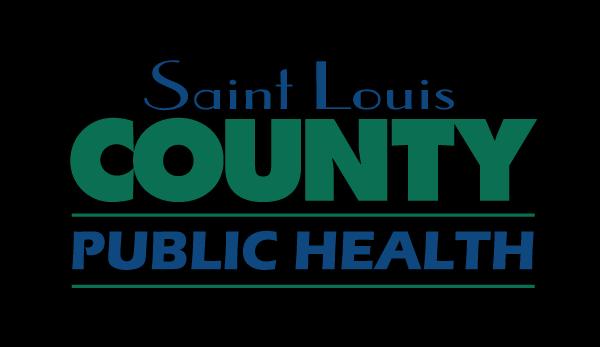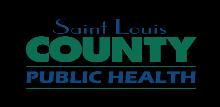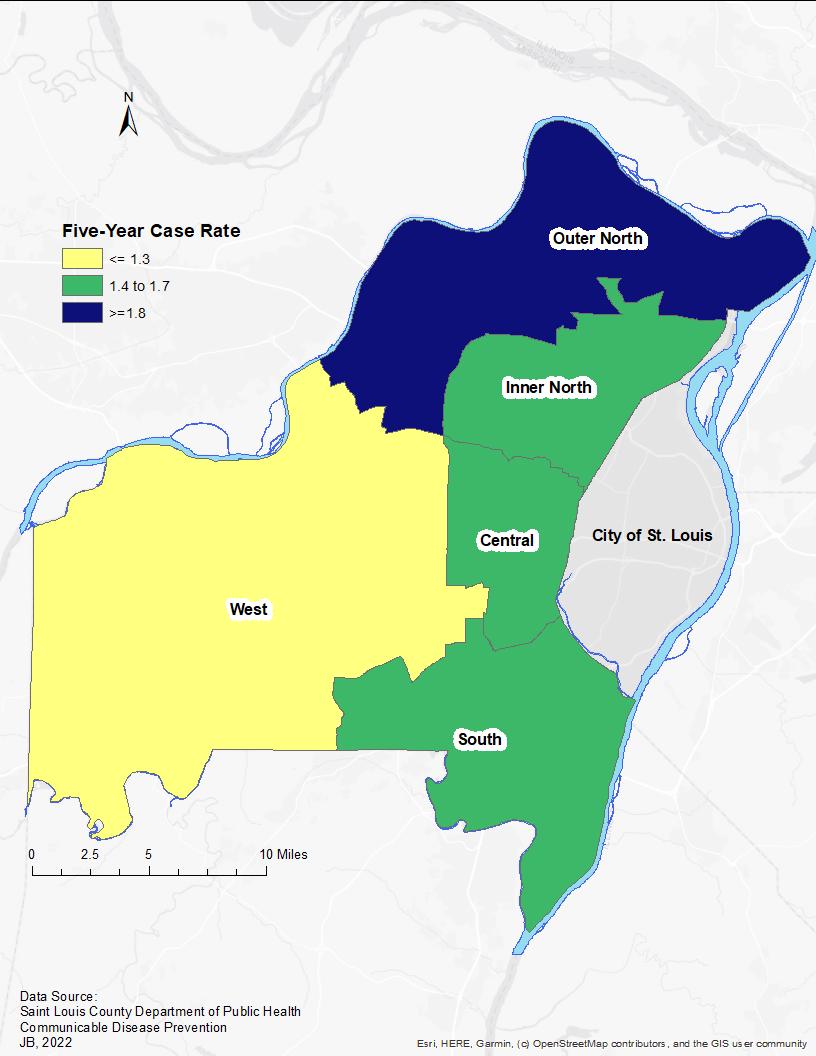
2021 Tuberculosis Program 2017 to 2021 Annual Surveillance Report SAINT LOUIS COUNTY DEPARTMENT OF PUBLIC HEALTH 6121 NORTH HANLEY ROAD, BERKELEY, MO 63134

Annual TB Surveillance Report, 2017 to 2021 Data Source: Saint Louis County Department of Public Health, Communicable Disease Control Services Page 2 of 25 This report is updated annually – Last Update 2/27/2023 (JB) Contents Saint Louis County Department of Public Health..................................................................................................................3 Report Preparation 3 Introduction 4 Notes About the Data ............................................................................................................................................................5 The Tuberculosis Program......................................................................................................................................................7 Tuberculosis Disease in Saint Louis County...........................................................................................................................8 Tuberculosis Disease by Country of Birth 10 Tuberculosis Disease by Race and Ethnicity 14 Tuberculosis Disease by Age and Age Group 16 Tuberculosis Disease by Risk Factors...................................................................................................................................18 Drug-Resistant Tuberculosis ................................................................................................................................................19 Tuberculosis Infection..........................................................................................................................................................20 Nontuberculous Mycobacteria 21 Next Steps and Recommendations 22 References ............................................................................................................................................................................23 Appendix A: CDC Global Regions .........................................................................................................................................24 Appendix B: Useful Links......................................................................................................................................................25
Saint Louis County Department of Public Health Mission

To promote, protect, and improve the health and environment of the community.
Vision
Healthy people, healthy environment, equitable communities.
Values
We believe in:
• Being a public health leader in the community
• Providing equitable access to services and resources
• Being responsive to the changing needs of our community
• Operating in an ethical, transparent, and fiscally responsible manner
• Serving our community with dignity and respect
Report Preparation
This report was prepared by the Saint Louis County Department of Public Health, Division of Communicable Disease Prevention and the Division of Communicable Disease Response.
• Epidemiology Program
• Tuberculosis Program
Saint Louis County Department of Public Health
6121 North Hanley Road
Berkeley, MO 63134
For additional information, please contact 314-615-1630 or cdcs.doh@stlouiscountymo.gov.
Data Source: Saint Louis County Department of Public Health, Communicable Disease Control Services Page 3 of 25
This report is updated annually – Last Update 2/27/2023 (JB)
Annual TB Surveillance Report, 2017 to 2021
Introduction
Tuberculosis Disease
Tuberculosis (TB) disease is caused by an infection with Mycobacterium tuberculosis. Transmission of TB occurs personto-person through aerosolized bacteria from coughing, talking, or singing.1 When an individual inhales the bacteria, the bacteria can settle and grow in the lungs causing symptoms or it can spread to other parts of the body 1
Symptomatic TB can be presented in two forms: pulmonary and extrapulmonary. Predominantly, TB is pulmonary, meaning it infects the lungs causing symptoms such as coughing, hemoptysis (coughing up blood), and chest pain.2 Data from the Centers for Disease Control and Prevention (CDC) show that in 2020, 78.9% of new TB cases were pulmonary.3 Extrapulmonary disease refers to TB disease presenting in parts of the body other than the lungs, such as the brain, spinal cord, lymphatic system, or joints, for example.3 Symptoms for extrapulmonary disease vary based on where the infection is occurring and the disease may not transmit to others like a pulmonary infection
According to the World Health Organization, globally, an estimated 10 million people are diagnosed with TB per year and 1.5 million die from TB per year.4 Data from the Centers for Disease Control and Prevention (CDC) show that the incidence of TB disease in the United States was 2.2 cases per 100,000 in 2020 with 526 reported deaths in 2019, the most recent year available.3
Tuberculosis, whether pulmonary or extrapulmonary, can be prevented through screening high risk individuals and is treatable with a combination of antibiotics.
Tuberculosis Infection
Unlike TB disease, TB infection is not infectious due to the inactivity of the M. tuberculosis bacteria in an individual’s body. While a person with TB infection has the same bacteria as someone with TB disease, they do not have symptoms, are not sick with the disease, and will not transmit the disease to others Many healthy people living with TB infection will never progress to TB disease, but 5 to 10% of people will develop the disease at some point in their lives. For half of those who develop TB disease, they will do so within the first two years of becoming infected with M. tuberculosis. 4, 5
According to the World Health Organization, globally, an estimated 25% of the population has TB infection.4 The CDC estimates roughly 13 million people within the United States have TB infection.5 Screening and treating individuals for TB infection can reduce the global, national, and local incidence of TB disease.
Data Source: Saint Louis County Department of Public Health, Communicable Disease Control Services Page 4 of 25
This report is updated annually – Last Update 2/27/2023 (JB)

Annual TB Surveillance Report, 2017 to 2021
Notes About the Data
The Saint Louis County Department of Public Health (DPH) Tuberculosis (TB) Program utilizes the National TB Program Objectives and Performance Targets published by the Centers of Disease Control and Prevention (CDC) to evaluate TB within Saint Louis County, MO. The mission of the National Program is to promote health and quality of life by preventing, controlling, and eventually eliminating TB from the United States. CDC’s National TB Program focuses on objectives for specific populations and sets these objectives to monitor the nation’s progress and motivate change that will prevent further disease. Updated National TB Program Objectives and Performance Targets for 2020 and 2025 were released in August 2015 and September 2019, respectively. A link to these targets can be found in Appendix B. Figures in this report depict both the 2020 and 2025 targets, as well as compare the key findings and accomplishments regarding the control and prevention of TB in the nation and Saint Louis County from 2017 to 2021. Data for Missouri are not currently available for 2021.
Data regarding TB disease and infection cases were obtained from the Missouri Health and Surveillance Information System (WebSurv), which is maintained by the Missouri Department of Health and Senior Services (MDHSS). Missouri’s communicable disease reporting law, 19 CSR 20-20.020, requires reporting of suspected or confirmed TB disease within twenty-four (24) hours and any TB infection cases within three (3) days, to the local health authority or to MDHSS.
Saint Louis County rates were calculated with population totals from the Selected Characteristics of the Native and Foreign-Born Population, 2020 American Community Survey 5-year Estimates and the Age and Sex, 2021 American Community Survey 1-year Estimate. National rates were derived from CDC’s Division of Tuberculosis Elimination, National Center for HIV, Viral Hepatitis, STD, and TB Prevention, annual report titled “Reported Tuberculosis in the United States, 2021 ” A link to this report can be found in Appendix B
This report presents data on the 2017 to 2021 cohort of countable TB patients in Saint Louis County. To be considered ‘counted’, the patient must have a residential address within Saint Louis County when they test positive for TB disease. Saint Louis County DPH also manages patients, but these patients may not be considered ‘countable’. Managed patients that are not ‘counted’ are those who were initially diagnosed in another jurisdiction then moved to Saint Louis County during their treatment period. This distinction between counted and managed patients helps prevent a patient being counted multiple times for TB disease and it also ensures that they finish their treatment regardless of their initial residential jurisdiction. The only section of this report that includes managed patients that are not ‘countable’ is the risk factors section.

DPH, along with the Saint Louis County Department of Planning, established five Saint Louis County regions based on the social and demographic characteristics of the regions’ residents. Using five County regions allows for sub-County-level comparisons, without the volatility or risk of individual identifiers which may be present in ZIP Code- or census tractlevel comparisons.
Data Source: Saint Louis County Department of Public Health, Communicable Disease Control Services Page 5 of 25 This report is updated annually – Last Update 2/27/2023 (JB)
Annual TB Surveillance Report, 2017 to 2021
Executive Summary
In Saint Louis County, 20 cases of TB disease were reported in 2021, increasing the case rate from 1.6 cases per 100,000 persons in 2020 to 2.0 cases per 100,000 persons in 2021. The TB disease rate in Saint Louis County failed to reach the national target or 1.3 cases per 100,000 in 2021 by 53.8%

The TB disease case rate within the non–U.S.-born population continued to increase for the third year while case rate within the U.S-born population decreased from 2020 to 2021 by 25.0%. The non–U.S.-born rate increased from 16.3 cases to 22.5 cases per 100,000 non–U.S.-born persons with 35.2% of this population being from South Asia. The U.S.born population saw a decrease from 0.4 cases to 0.3 per 100,000 U.S.-born persons in 2020 and 2021, respectively
The U.S.-born non-Hispanic black TB disease case rate in Saint Louis County continued to decrease from 2019 (1.3 cases per 100,000) through 2021 (0.0 cases per 100,000), a decrease of 100.0%, surpassing CDC’s 2020 and 2025 goal of being at or below 1.5 and 1.0 cases per 100,000, respectively, for this population. The non-Hispanic white TB disease case rate decreased to 0.3 cases per 100,000 persons in 2021 from 0.5 cases per 100,000 in 2020. This is the second year in a row where this rate has been higher than that of the non-Hispanic black population in Saint Louis County
In 2021, five of the 20 counted and managed patients with TB disease had a known risk factor, with the majority of those with a risk factor of being immunocompromised (non-HIV) (60 0%, n=3)
In 2021, the highest proportion of cases were among patients 25 to 44 (57.9%, n=11) There were no cases of TB disease among children under the age of 15 years in Saint Louis County.
Screening for and treating TB infection is a priority for the TB program because the infection can progress into TB disease In 2021, Saint Louis County DPH saw a small decrease of 3.0% in reports of TB infection (n=457) compared to 2020 (n=471)
Data Source: Saint Louis County Department of Public Health, Communicable Disease Control Services Page 6 of 25 This report is updated annually – Last Update 2/27/2023 (JB)
Annual TB Surveillance Report, 2017 to 2021
The TB Program in 2021:
• The DPH Chest Clinic had 430 TBrelated appointments scheduled
• 148 unique individuals were seen at Chest Clinic
• There was a 77.0% increase in patients seen in chest clinic compared to 2020 due to the COVID19 pandemic
• 35 individuals began treatment for TB infection through Chest Clinic
The Tuberculosis Program
The DPH Tuberculosis (TB) Program performs TB surveillance, prevention services, disease investigation, medical follow-up, treatment, clinical management, and case management for residents of Saint Louis County Priorities of the Saint Louis County TB Program include:
• Identifying all individuals with suspected and confirmed TB disease and providing patientcentered care, including intensive case management services and appropriate treatment via directly observed therapy (DOT).
• Completing contact investigations among contacts of patients with infectious TB disease, including TB screening, medical evaluations, and prophylactic therapy, if necessary.
• Working in partnership with patients, hospitals, health care providers, and labs to diagnose, treat, and prevent further transmission of TB.
• Collecting and analyzing TB epidemiological data.
Services Provided by Saint Louis County DPH

DPH is the leading provider of TB care in Saint Louis County. The DPH Chest Clinic is available to any Saint Louis County resident with symptoms of TB disease, a positive test for TB infection, and contacts to individuals with TB disease. TB diagnostic services (such as bloodwork, sputum induction, and chest x-rays) and expert medical evaluation are provided on-site. The Chest Clinic supports equitable access to the full continuum of tuberculosis care, from diagnosis through treatment completion, regardless of financial resources, race, gender, age, language, legal status, religious beliefs, sexual orientation, culture, or co-morbidities.
The TB Program provides case management for residents diagnosed with TB disease, regardless of where they are receiving their TB care. Case management activities include patient education, comprehensive patient interviews, medical care coordination, contact elicitation, contact evaluation, and DOT. DOT is the standard of care for managing patients with suspected or confirmed TB disease; it ensures medications are taken appropriately and consistently until completion of treatment, allows for monitoring of treatment failure, and prompt reporting of side effects. DPH outreach workers traverse the entire county to perform DOT in patients’ homes, workplaces, and other locations convenient for the patient.
The TB Program works with the Epidemiology Program to conduct surveillance of TB disease, TB infection, and nontuberculous mycobacterial infection. Epidemiologists analyze TB trends, prepare surveillance reports, and update tracking systems to describe how TB impacts residents of Saint Louis County and to develop and revise strategies necessary to improve TB prevention and care within the community.
Data Source: Saint Louis County Department of Public Health, Communicable Disease Control Services
Update 2/27/2023 (JB)
Annual TB Surveillance Report, 2017 to 2021
25
–
Page 7 of
This report is updated annually
Last
*These numbers represent patients who were managed by Saint Louis County in 2021 regardless of counted jurisdiction or year.
Tuberculosis Disease in Saint Louis County

During 2017 to 2021, the peak of reported tuberculosis (TB) disease cases was in 2021 for Saint Louis County (2.0 cases per 100,000 persons). Reported cases increased 33.3% from 2017 to 2021 in the county. Nationally, there were 7,882 cases of TB disease (2.4 cases per 100,000 persons) reported to the CDC in 2021 while in 2020, Missouri had a rate of 1.3 per 100,000 persons (n=72) CDC set a 2025 Performance Target of 1.3 TB disease cases per 100,000 persons or lower; the state of Missouri was able to achieve this target in 2020 while in 2021 the United States was unable to reach this target and Saint Louis County was 53.8% above the target. TB disease rates for the United States, Missouri, and Saint Louis County are shown in Figure 1, below.
Data Source: Saint Louis County Department of Public Health, Communicable Disease Control Services Page 8 of 25 This report is updated annually – Last Update 2/27/2023 (JB)
Annual TB Surveillance Report, 2017 to 2021
Figure 1: Tuberculosis Case Rate
0.0 0.5 1.0 1.5 2.0 2.5 3.0 2017 2018 2019 2020 2021 Cases per 100,000 persons Saint Louis County Total Missouri United States 2025
United States, Missouri, and Saint Louis County, 2017 to 2021
National TB Program Target
Fourteen ZIP Codes in Saint Louis County had a five-year TB case rate of over 2.0 per 100,000 persons (63137, 63138, 63125, 63132, 63114, 63033, 63043, 63146, 63123, 63088, 63117, 63130, 63017, 63042) Map 1 represents the TB disease case rate for the previous five years visualized over the five regions of Saint Louis County: Inner North, Outer North, West, Central, and South. In the past five years, Outer North has had the highest rate of TB of greater than or equal to 1.8 per 100,000 persons.


Map 1: Tuberculosis Case Rate per 100,000 Persons by Saint Louis County Region, 2017 to 2021, Saint Louis County, n = 80
*Case rates are based on the total Saint Louis County population of the ZIP Codes in each region.
Data Source: Saint Louis County Department of Public Health, Communicable Disease Control Services Page 9 of 25
This report is updated annually – Last Update 2/27/2023 (JB)
Annual TB Surveillance Report, 2017 to 2021
Tuberculosis Disease by Country of Birth
Because many other countries experience higher rates of tuberculosis (TB) compared with the U.S., many of the individuals seen and treated for TB disease by the TB Program are non–U.S.-born, making being born in a country of higher rates of TB disease the greatest risk factor for exposure to Mycobacterium tuberculosis. Table 2 depicts TB disease among U.S.-born and non–U.S.-born residents in Saint Louis County from 2017 to 2021. The TB disease case rate among non–U.S.-born residents has consistently been higher than the rate among U S -born residents throughout the previous five years, as seen in Figure 2. During 2017 to 2021, 25.0% (n=20) of individuals with TB disease were U.S.-born, compared to 75.0% (n=60) of individuals being non–U.S.-born residents. The proportion of TB disease cases per year that were U.S.-born ranged from a high of 40.0% (n=6) in 2017 to a low of 15.0% (n=3) in 2021.
Data Source: Saint Louis County Department of Public Health, Communicable Disease Control Services

Annual TB Surveillance Report, 2017 to 2021
This report is updated annually – Last Update 2/27/2023 Page 10 of 25
Case Year TB Case Count TB Case Rate per 100,000 TB Case Count TB Case Rate per 100,000 2017 6 0.6 9 13.1 2018 4 0.4 12 17.3 2019 3 0.3 10 14.4 2020 4 0.4 12 16.3 2021 3 0.3 17 22.5
Table 1: Tuberculosis Cases and Case Rate in U.S.-Born and Non–U.S.-Born Residents, Saint Louis County, 2017 to 2021
U.S.-Born Residents
Non–U.S.-Born Residents
0.0 4.0 8.0 12.0 16.0 20.0 24.0 2017 2018 2019 2020 2021 Cases per 100,000 persons Saint Louis County Total Non–U.S.-born U.S.-Born
Figure 2: Tuberculosis Case Rate in U.S.-Born and Non–U.S.-Born Residents, Saint Louis County, 2017 to 2021
CDC’s 2020 and 2025 Performance Targets called for maintaining the TB disease case rate among U.S.-born persons at 0.4 cases per 100,000 persons or lower
In 2021, Saint Louis County had an incidence rate of 0.3 cases per 100,000 among the U.S.-born persons, a 33.3% decrease compared to 2020 (0.4 cases per 100,000), still meeting the 2020 and 2025 national targets. CDC reported the 2021 national case rate as 0.8 cases per 100,000 persons, unable to reach their 2020 and 2025 targets, as seen in Figure 3.
Data Source: Saint Louis County Department of Public Health, Communicable Disease Control Services

Annual TB Surveillance Report, 2017 to 2021
This report is
annually – Last Update 2/27/2023 Page 11 of 25
updated
0.0 0.2 0.4 0.6 0.8 1.0 1.2 2017 2018 2019 2020 2021 Cases per 100,000 persons
Figure 3: Tuberculosis Case Rate in U.S.-Born Residents, United States, Missouri, and Saint Louis County, 2017 to 2021
Saint Louis County Missouri United States 2020 and 2025 U.S.-Born National TB Program Targets
CDC’s 2020 and 2025 Performance Targets called for reducing the TB disease case rate among non-U.S.-born persons to 11.1 cases and 8.8 cases per 100,000 persons, respectively.
In 2021, the TB disease case rate among non–U.S.-born residents in Saint Louis County was above both the 2020 and 2025 national targets, at 22.5 cases per 100,000 persons, a 41.7% increase from 2020. This large increase stresses the importance of screening and treatment of our non-U.S.-born population to protect them from progressing to TB disease. The 2021 national TB disease case rate was 12.2 cases per 100,000 persons; above the 2020 target
Data Source: Saint Louis County Department of Public Health, Communicable Disease Control Services
updated

Annual TB Surveillance Report, 2017 to 2021
This report is
annually – Last
2/27/2023 Page 12 of 25
Update
0.0 5.0 10.0 15.0 20.0 25.0 2017 2018 2019 2020 2021 Cases per 100,000 persons Saint Louis County Missouri United States 2025 Non-U.S.-born National TB Program 2020 Non-U.S.-born National TB Program
Figure 4: Tuberculosis Case Rate in Non–U.S.-Born Residents, United States, Missouri, and Saint Louis County, 2017 to 2021
During 2017 to 2021, there were 60 cases of TB disease among non–U.S.-born residents, with 35.2% of those individuals being from South Asia. Figure 5 depicts the origins of TB disease cases in non–U.S.-born residents for the previous five years by regions These regions are pre-defined by the CDC and used by DPH to de-identify patients. See Appendix A for the complete list of countries and territories included in each CDC region.
35.2%







of non–U.S.-born patients were from South Asia
*Includes: Caribbean, West/Central Asia, Middle East, Haiti, South America, and Eastern, Western, and Northern Europe.
Data Source: Saint Louis County Department of Public Health, Communicable Disease Control Services

Annual TB Surveillance Report, 2017 to 2021
This report is
annually – Last Update 2/27/2023 Page 13 of 25
updated
Southern Europe 5.6% South Asia 35.2% Africa 14.8% Mexico and Central America 5.6% East Asia 5.6% Southeast Asia 22.2% *Other 11.1%
Figure 5: Tuberculosis Cases in Non–U.S.-Born Residents by Country of Birth, Saint Louis County, 2017 to 2021
Tuberculosis Disease by Race and Ethnicity
Saint Louis County is actively working to address racial and ethnic health disparities and improve the health of persons disproportionately affected by tuberculosis (TB). This can be seen through the availability of Chest Clinic and case management services to all County residents, regardless of financial resources, race, gender, age, language, legal status, religious beliefs, sexual orientation, culture, or co-morbidities.

During 2021, Saint Louis County saw another decline in TB disease among the U.S.-born non-Hispanic black population Compared to 2019, there has been a 100% decrease in cases (1.3 to 0.0 cases per 100,000 persons), meeting both the 2020 and 2025 Performance Targets (1.3 and 1.0 cases per 100,000 persons, respectively). This trend could reflect a true decline in TB disease in this population or could be a result of a lack of available medical care during the pandemic.
The 2021 national case rate was 2.0 cases per 100,000 persons, no change from the 2020 rate (2.0 cases per 100,000 persons) Overall, the United States has seen a continual decrease in TB disease rates among this population for the past five years but was unable to meet their 2020 and 2025 Performance Targets, as seen in figure 6.
Data Source: Saint Louis County Department of Public Health, Communicable Disease Control Services
Annual TB Surveillance Report, 2017 to 2021
This report is
annually – Last
2/27/2023 Page 14 of 25
updated
Update
0.0 0.5 1.0 1.5 2.0 2.5 3.0 3.5 4.0 2017 2018 2019 2020 2021 Cases per 100,000 persons Saint Louis County Missouri United States 2025 U.S.-Born non-Hispanic black National TB Program Target 2020 U.S.-Born non-Hispanic black National TB Program Target
Figure 6: Tuberculosis Case Rate in U.S.-Born Non-Hispanic Black Residents, United States, Missouri, and Saint Louis County, 2017 to 2021
While the U.S.-born non-Hispanic black case rate has historically been higher than that of the U.S.-born non-Hispanic white case rate in Saint Louis County, in 2020 we saw this pattern change and continue through 2021 The US-born nonHispanic white case rate decreased from 0.5 in 2020 to 0.3 in 2021 but remains higher than the U.S.-born non-Hispanic black case rate, as seen in Figure 7. As noted above, this may reflect a truly higher TB case rate among non-Hispanic white residents compared with non-Hispanic Black residents, it is also possible that other factors (e.g., healthcareseeking behavior or additional pandemic-related issues) may have played a role.
Data Source: Saint Louis County Department of Public Health, Communicable Disease Control Services

Annual TB Surveillance Report, 2017 to 2021
This report is
annually – Last
2/27/2023 Page 15 of 25
updated
Update
0.0 0.5 1.0 1.5 2.0 2.5 2017 2018 2019 2020 2021 Cases per 100,000 persons U.S.-born
U.S.-born
Figure 7: Tuberculosis Case Rate in U.S.-Born Non-Hispanic Black Residents and U.S.-Born Non-Hispanic White Residents, Saint Louis County, 2017 to 2021
non-Hispanic white
non-Hispanic black
Tuberculosis Disease by Age and Age Group
Children between the ages of 0 to 4 years are more likely than older children and adults to develop life-threatening forms of tuberculosis (TB) disease due to their developing immune systems.7 The Saint Louis County TB Program works diligently to find and treat residents within this age group to prevent TB disease from developing or becoming lifethreatening.
One goal of CDC’s Performance Targets for 2020 and 2025 is to reduce the burden of TB for children under 5 years old to fewer than 0.3 and 0.1 cases per 100,000 persons, respectively For the past five years, Saint Louis County has had no cases of TB disease among children under the age of 5, resulting in a case rate below the Performance Target, as seen in Figure 8. The United States saw a 3.0% decrease of TB disease among this age group from 2020 to 2021.
Data Source: Saint Louis County Department of Public Health, Communicable Disease Control Services

updated
Update
Annual TB Surveillance Report, 2017 to 2021
This report is
annually – Last
2/27/2023 Page 16 of 25
0.0 0.2 0.4 0.6 0.8 1.0 1.2 1.4 1.6 2017 2018 2019 2020 2021 Cases per 100,000 persons Saint Louis County Missouri United States 2025 National TB Program Target for children under 5 2020 National TB Program Target for children under 5
Figure 8: Tuberculosis Case Rates in Children 0-4 Years Old, United States, Missouri, and Saint Louis County, 2017 to 2021
During the last five years, Saint Louis County residents with TB disease ranged in age from 6 to 88 years, with a median age of 47 years Overall, for the past five years, the majority of individuals with TB disease in Saint Louis County have been adults in the 25 to 44 (n=29) and the 45 to 64 (n=23) age range The 25 to 44 age range saw a 175.0% increase in cases in 2021, representing 57.9% of all cases that year.

Data Source: Saint Louis County Department of Public Health, Communicable Disease Control Services

Annual TB Surveillance Report, 2017 to 2021
This report is
annually – Last
2/27/2023 Page 17 of 25
updated
Update
Figure 9: Tuberculosis Case Rate by Age Group, Saint Louis County, 2017 to 2021
Tuberculosis Disease by Risk Factors
Risk factors for developing active tuberculosis (TB) disease fall into two categories: those which increase the likelihood of exposure to M. tuberculosis (e.g., close proximity to someone with TB disease, immigration from parts of the world with higher TB disease rates, or homelessness), and those which increase the risk of progression to TB disease (e.g., HIV infection, diabetes, being immunocompromised, and smoking) Although CDC and the World Health Organization (WHO) define many risk factors for the development of TB disease (see the link provided in Appendix B for more information), with the exception of being non–U.S.-born, the risk factors represented in Figure 10 were chosen because they encompass the factors mentioned in CDC’s annual TB report and by WHO as comorbidities that could lead to the progression or severity of TB disease.
Of the five risk factors presented in Figure 10, TB and HIV coinfection is arguably the most serious throughout the world. People with TB infection who are coinfected with HIV are more likely to develop TB disease; TB disease then increases the likelihood of death among people living with HIV.8 The National TB Program Objectives and Performance Targets for 2025 includes a goal to increase the number of patients with TB disease being tested for HIV to 99.0% From 2017 to 2021, Saint Louis County was able to test 95.0% (n=76) of the countable individuals with TB disease for HIV Of the 84 individuals whose TB treatment was managed by Saint Louis County between 2017 and 2021, 26.2% (n=22) had a single risk factor and 8.3% (n=7) had more than one risk factor. The two most common risk factors from 2017 to 2021 in this population were smoking (33.3%, n=12) and being immunocompromised (excluding HIV) (30.6% n=11), as seen in Figure 10.
*Cases with multiple risk factors are counted more than once
*Managed patients are included regardless of counted jurisdiction.
Data Source: Saint Louis County Department of Public Health, Communicable Disease Control Services

Annual TB Surveillance Report, 2017 to 2021
This report is updated annually – Last Update 2/27/2023 Page 18 of 25
3 8 11 12 2 HIV + Diabetes Mellitus Immunocompromised (excludes
Smoking Homeless
Figure 10: Total Tuberculosis Cases by Risk Factor within the Last Five Years, Saint Louis County, 2017 to 2021
HIV)
Drug-Resistant Tuberculosis
A drug resistance test is completed on every TB patient to ensure the appropriate therapy is being used for treatment. TB bacteria can have no resistance, multidrug-resistance, mono-resistance, or poly-resistance.
According to the CDC, multidrug-resistant tuberculosis (MDR-TB) can be defined as a TB organism that is resistant to two of the main medications used to treat TB: isoniazid (INH) and rifampin (RIF).9 There are two ways an individual can attain MDR-TB: primary or acquired. Primary MDR-TB occurs from the direct transmission of drug resistant TB from one person to another. Acquired MDR-TB occurs when there is a complication with the prescribed regimen, resulting in the typical organism developing a resistance to the medication. In Saint Louis County, from 2017 to 2021, there has been one case of MDR-TB.
TB disease as a result of organisms that demonstrate in vitro drug resistance to one medication is referred to as monoresistant TB. In Saint Louis County from 2017 to 2021, there were three cases of mono-resistant TB, with resistance to INH observed in 66.7% (n=2) of cases. Mono-resistance to pyrazinamide (PZA) was observed in 33.3% (n=1) of all the mono-resistant cases, as seen in Figure 11. In continued efforts to prevent further drug-resistance, the TB Program works diligently to provide proactive case management by ensuring patients are prescribed the recommended regimen and complete their therapy through directly observed therapy (DOT).
Data Source: Saint Louis County Department of Public Health, Communicable Disease Control Services

Annual TB Surveillance Report, 2017 to 2021
This report is
annually – Last Update 2/27/2023 Page 19 of 25
updated
0 1 2 3 INH PZA INH & PZA MDR Number of Cases Resistant Organisims
Figure 11: Drug-Resistant Tuberculosis, Saint Louis County, 2017 to 2021
Tuberculosis Infection
Achieving tuberculosis (TB) elimination will require expanded efforts to identify and treat individuals with TB infection
To treat and prevent progression to TB disease, the state of Missouri requires positive TB screenings to be reported to local health departments. In 2021, there was a 3.0% decrease in the number of positive TB infection screenings reported to Saint Louis County DPH compared to 2020. Figure 12 represents the previous five years’ worth of reported TB infections While these individuals are reported to DPH, only a small number of individuals seek treatment through the chest clinic; some seek treatment through their private provider and others don’t seek treatment at all.
Data Source: Saint Louis County Department of Public Health, Communicable Disease Control Services

Annual TB Surveillance Report, 2017 to 2021
This report is updated annually – Last Update 2/27/2023 Page 20 of 25
411 512 525 471 457 0 100 200 300 400 500 600 2017 2018 2019 2020 2021 Number of TB Infection reports
Figure 12: Tuberculosis Infection Cases, Saint Louis County, 2017 to 2021
Nontuberculous Mycobacteria
Nontuberculosis mycobacteria (NTM) is a reportable condition in the state of Missouri. The TB program at Saint Louis County will follow patients who had specimens collected for mycobacterial species until their culture results are reported positive with tuberculosis or an NTM. NTMs are not monitored or treated through Saint Louis County. During 2017 to 2021, there were 754 infections due to NTMs reported to Saint Louis County. The greatest proportion of these infections were due to Mycobacterium avium, which caused 32.9% (n=248) of NTM reports over the past five years.
Figure 13 presents the top 10 NTM species that were reported for the previous five years and all remaining species included in the variable ‘other rapid grower ’
Figure 13: Top 10 Nontuberculous Mycobacterial Species, Saint Louis County, 2017 to 2021
*Other includes: blank, other rapid grower, M. xenopi, M. smegmatis, M. simiae, M. chimaera, P. peregrinum, M. marinum, M. goodie, M. parascrofulaceum, M. intracellulare, M. porcinum, M. neworleansense, M. neoaurum, M. phocaicum, M. immunogenum, M. lentiflavum, M. wolinskyi, M. sphagni, M. scrofulaceum, and M. szulgai, M. nocardia brazilinesis, M. branderi, M. paraffinicum, M. aurum, M. interjectum, M. asiaticum, M. bovis.
Data Source: Saint Louis County Department of Public Health, Communicable Disease Control Services

Annual TB Surveillance Report, 2017 to 2021
This report is updated annually – Last Update 2/27/2023 Page 21 of 25
M. avium 33% M. gordonae 17% M. chelonae 5% M. fortuitum complex 7% M. arupense 9% M. abscessus 7% M. mucogenicum 6% M. kansasii 3% M. chimaera 2% M. nonchromogenicum 4% Other Rapid Grower 7%
Next Steps and Recommendations
The Tuberculosis (TB) program at the Saint Louis County Department of Public Health (DPH) will continue to work with patients, healthcare providers, and partners to reduce the progression to and transmission of tuberculosis. DPH recommends:
- Screening individuals at high-risk for TB: born in or frequently travel to a country where TB is common (high TB rate); healthcare provider that works in a setting with high risk for TB transmission; live in or lived in large group settings (homeless shelters, congregate settings); recently spent time with someone who has active TB disease, or has a weaker immune system because of certain medications or health conditions, for example
- Timely reporting of positive screenings (positive TB skin test, positive blood test)
- Individuals with a positive screening should follow up with their primary care provider, DPH, or a physician knowledgeable in tuberculosis
- Individuals should start and complete treatment for TB infection if treatment is deemed necessary
- Individuals positive with TB disease, follow the CDC recommended treatment regimen and complete treatment
Data Source: Saint Louis County Department of Public Health, Communicable Disease Control Services

Annual TB Surveillance Report, 2017 to 2021
This report is updated annually – Last Update 2/27/2023 Page 22 of 25
References
1. How TB Spreads. Centers for Disease Control and Prevention.
https://www.cdc.gov/tb/topic/basics/howtbspreads.htm. Accessed May 25, 2022.
2. Signs and Symptoms. Centers for Disease Control and Prevention.
https://www.cdc.gov/tb/topic/basics/signsandsymptoms.htm. Accessed May 25, 2022.
3. Reported Tuberculosis in the United States, 2021. Centers for Disease Control and Prevention. https://www.cdc.gov/tb/statistics/reports/2021/Exec_Commentary.html. Accessed December 8, 2022.
4. Tuberculosis. World Health Organization. https://www.who.int/health-topics/tuberculosis#tab=tab_1. Accessed May 26, 2022.
5. Data and Statistics. Centers for Disease Control and Prevention. https://www.cdc.gov/tb/statistics/default.htm. Accessed May 27, 2022.
6. TB Prevention. Centers for Disease Control and Prevention.
https://www.cdc.gov/tb/topic/basics/tbprevention.htm. Accessed May 27, 2022.
7. TB and Children. Centers for Disease Control and Prevention. https://www.cdc.gov/tb/topic/populations/tbinchildren/default.htm. Accessed June 2, 2022.
8. TB and HIV Coinfection. Centers for Disease Control and Prevention.
https://www.cdc.gov/tb/topic/basics/tbhivcoinfection.htm. Accessed May 13, 2022.
9. Drug-Resistant TB. Centers for Disease Control and Prevention https://www.cdc.gov/tb/topic/drtb/default.htm Accessed May 13, 2022.
Data Source: Saint Louis County Department of Public Health, Communicable Disease Control Services

Annual TB Surveillance Report, 2017 to 2021
This report is updated annually – Last Update 2/27/2023 Page 23 of 25
Appendix A: CDC Global Regions
The Saint Louis County Department of Public Health utilizes CDC global regions to further de-identify report data. The countries/territories included in each CDC region are provided below.
CDC Region Countries/ Territories Included
Africa
Algeria, Angola, Botswana, Benin, Bassas Da India, Burundi, Chad, Congo, Cameroon, Comoros, Central African Republic, Cape Verde, Djibouti, Dahomey [Benin], Egypt, Equatorial Guinea, Eritrea, Ethiopia, Europa Island, French Territory of The Affars and Issas, The Gambia, Gabon, Ghana, Glorioso Islands, Guinea, Cote D' Ivoire, Kenya, Liberia, Lesotho, Libya, Madagascar, Spanish North Africa, Mayotte, Malawi, Mali, Morocco, Mauritius, Mauritania, Mozambique, Niger, Nigeria, Guinea-Bissau, Reunion, Southern Rhodesia, Rwanda, Seychelles, South Africa, Senegal, Saint Helena, Sierra Leone, Somalia, South Sudan, Spanish Sahara, Sudan, Tromelin Island, Togo, Sao Tome and Principe, Tunisia, Tanzania, Uganda, Burkina Faso, Namibia, Western Sahara, Swaziland, Zambia, Zimbabwe
East Asia
South Asia
Southeast Asia
West/Central
China, Hong Kong, Japan, North Korea, South Korea, Macau, Mongolia, Taiwan, Southern Ryukyu Islands
Bangladesh, Bhutan, Sri Lanka, India, Maldives, Nepal, Pakistan, Sikkim
Burma, Brunei, Cambodia, Indonesia, Laos, Malaysia, Paracel Islands, Spratly Islands, Papua New Guinea, Timor, Philippines, Singapore, Thailand, East Timor, Vietnam, North Vietnam, South Vietnam
Asia Afghanistan, Azerbaijan, Armenia, Georgia, Kyrgyzstan, Kazakhstan, Tajikistan, Turkmenistan, Uzbekistan
Australia/ Oceania
Caribbean (except Haiti)
Eastern Europe
Southern Europe
Western and Northern Europe
Australia, Ashmore and Cartier Islands, Cocos (Keeling) Islands, Coral Sea Islands, Norfolk Island, New Zealand
Aruba, Antigua And Barbuda, Anguilla, Barbados, Bermuda, The Bahamas, Cayman Islands, Cuba, Dominica, Dominican Republic, Grenada, Guadeloupe, Jamaica, Martinique, Montserrat, Netherlands
Antilles, Saint Kitts And Nevis, Saint Lucia, Swan Islands, Trinidad And Tobago, Turks And Caicos Islands, Saint Vincent and the Grenadines, British Virgin Islands
Belarus, Bulgaria, Czechoslovakia, Estonia, Czech Republic, Hungary, Latvia, Lithuania, Slovakia, Moldova, Poland, Romania, Russia, Ukraine, and Union Of Soviet Socialist Republics
Albania, Andorra, Bosnia And Herzegovina, Gibraltar, Greece, Croatia, Italy, F.Y.R.O. Macedonia, Malta, Portugal, Slovenia, San Marino, Spain, Holy See (Vatican City), Yugoslavia
Austria, Belgium, Denmark, East Berlin, Ireland, Finland, France, Guernsey, Germany, Iceland, Isle Of Man, Jersey, Jan Mayen, Liechtenstein, Luxembourg, Monaco, Netherlands, Norway, Svalbard, Sweden, Switzerland, United Kingdom, West Berlin
Haiti Haiti
Mexico & Central America
Belize, Costa Rica, El Salvador, Guatemala, Honduras, Mexico, Nicaragua, Panama, Panama Canal Zone
Middle East United Arab Emirates, Bahrain, Cyprus, Gaza Strip, Iran, Israel, Iraq, Jordan, Kuwait, Lebanon, Oman, Qatar, Saudi Arabia, Syria, Turkey, West Bank, Yemen
North America Canada, Greenland, and Saint Pierre and Miquelon
Solomon Islands, Central And Southern Line Islands, Cook Islands, Jarvis Island, Canton And Enderberry Islands, Fiji, Federated States Of Micronesia, Faroe Islands, French Polynesia, Gilbert and Ellice Islands, Gilbert Islands, Heard Island And Mcdonald Islands, Howland Island, Clipperton Island, U.S.
Pacific Islands
Miscellaneous Pacific Islands, Johnston Island, Juan De Nova Island, Kiribati, Christmas Island, Palmyra Atoll, Midway Island, New Caledonia, Niue, Vanuatu, Nauru, Pitcairn Island, Palau, Marshall Islands, Tokelau, Tonga, Tuvalu, Trust Territory Of The Pacific Islands, Wallis And Futuna, Wake Island, and Samoa
South America
Other/Unknown
Argentina, Bolivia, Brazil, Chile, Colombia, Ecuador, French Guiana, Falkland Islands, Guyana, Suriname, Paraguay, Peru, Uruguay, Venezuela
Antarctica, Bouvet Island, French Southern and Antarctic Lands, British Indian Ocean Territory, South Georgia and The South Sandwich Islands, and unknown countries
Data Source: Saint Louis County Department of Public Health, Communicable Disease Control Services

Annual TB Surveillance Report, 2017 to 2021
This report is
annually – Last Update 2/27/2023 Page 24 of 25
updated
Appendix B: Useful Links
The following links are useful tools DPH referenced throughout this report.
Centers for Disease Control and Prevention TB Risk Factors can be found at: https://www.cdc.gov/tb/topic/basics/risk.htm
Missouri Department of Health and Senior Services TB reports can be found at: http://health.mo.gov/living/healthcondiseases/communicable/tuberculosis/data.php
National TB Program Objectives & Performance Targets for 2025 can be found at: https://www.cdc.gov/tb/programs/Evaluation/Indicators/default.htm
Reported Tuberculosis in the United States, 2020: https://www.cdc.gov/tb/statistics/reports/2020/Exec_Commentary.html
World Health Organization TB Comorbidity and Risk Factors can be found at: https://www.who.int/news-room/fact-sheets/detail/tuberculosis
Data Source: Saint Louis County Department of Public Health, Communicable Disease Control Services

TB
Report, 2017 to 2021
Annual
Surveillance
This report is
annually – Last
2/27/2023 Page 25 of 25
updated
Update















